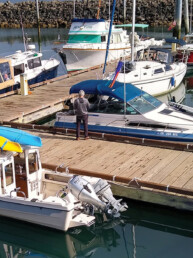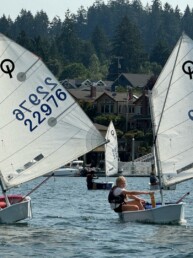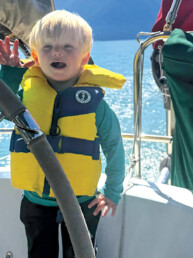From my vantage point atop a large, round granite boulder, sweeping views of the Gulf of Alaska and rugged Kenai Peninsula coast seemingly stretch on forever.
Turning the opposite direction to the east, my view is quite different. Yahtzee sits on a still pane of dark water in the corner of a small cove. Behind her, rock walls and thousand-foot mountain peaks tower skyward, leading my eyes from sea level to the tops of tall waterfalls. From here, it’s easy to understand why this distinctive anchorage earned a locals nickname of “Hole-in-the-wall”, and is rightly referred to as “…one of the most scenic and secluded small boat anchorages on the outer coast.”

Above the boat, low clouds spill over the rocks and trees, and the fine mist we’ve had all morning finally ends. It’s a sign. Just hours later, the grey skies slowly get brighter, spots of blue appear and before we know it the cove is being gloriously bathed in sunshine. Finally, our patience with the weather has paid off and a taste of summer is upon us.
Like sailors possessed we fling open hatches, shed wet layers, hang foul weather gear to dry, and I happily watch our battery level rise while our solar panels soak in the sun. Soon I’m off barefoot on the SUP paddling to waterfalls and around the infamous rock that guards the entrance to the cove. Speaking of the entrance, it’s the final major obstacle to experiencing this isolated little basin.
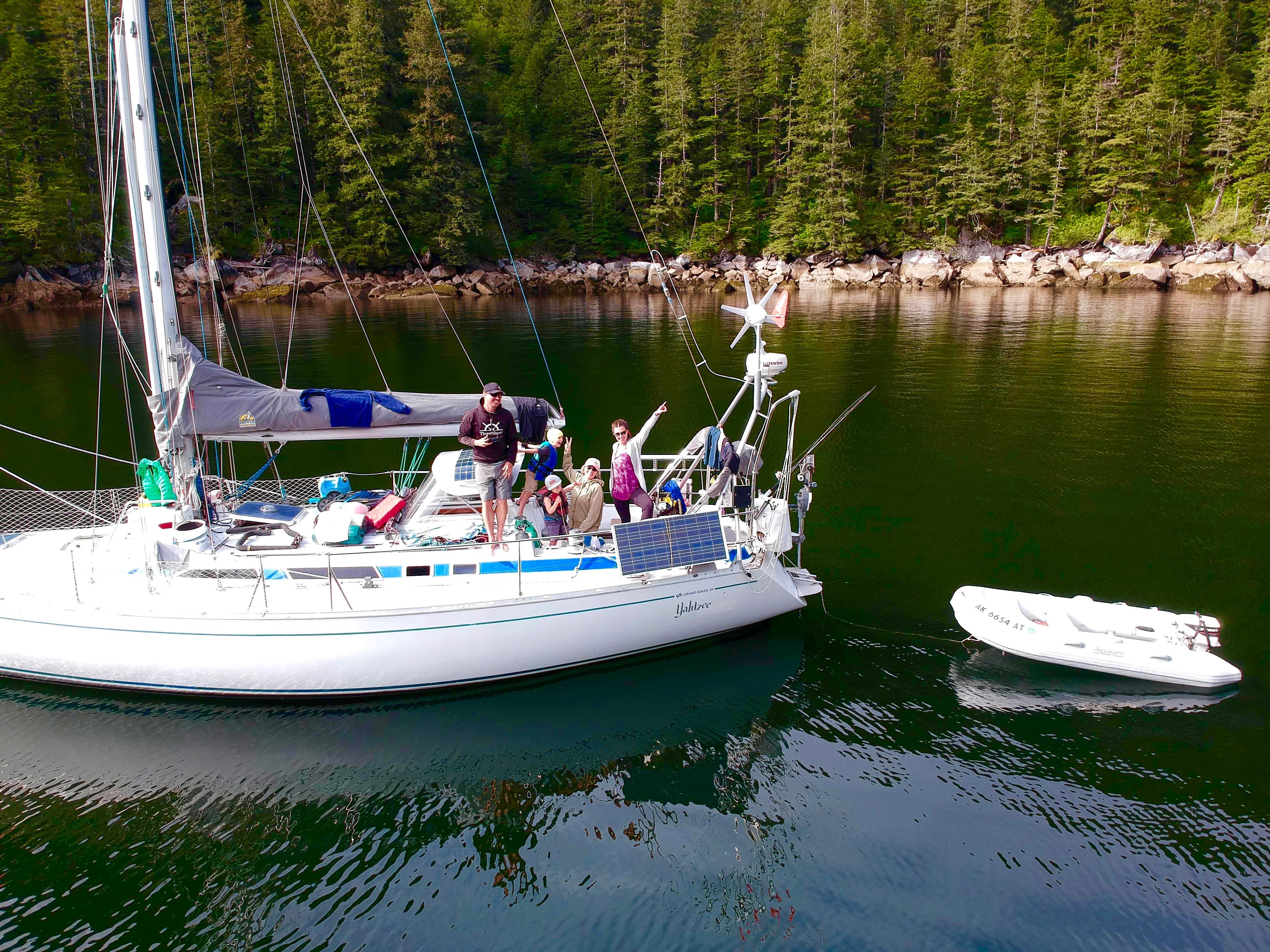
Surely, Taz Basin deserves all the praise it gets from those who are fortunate enough to grace her hallowed walls. But getting in or out of this sole anchorage on aptly named Granite Island is not entirely carefree. Prominently marking the narrow entrance to the basin is a big old flat rock smack in the middle of the channel, essentially creating north and south passes. Also, being open to the full brunt of the Pacific Ocean and Gulf of Alaska from the southwest, Taz can’t, or shouldn’t, be entered or exited safely if a sizable swell is pounding the island. Get it wrong and rocky cliffs on either side will not be forgiving. That said, in even moderately calm conditions, the entrance isn’t too intimidating.
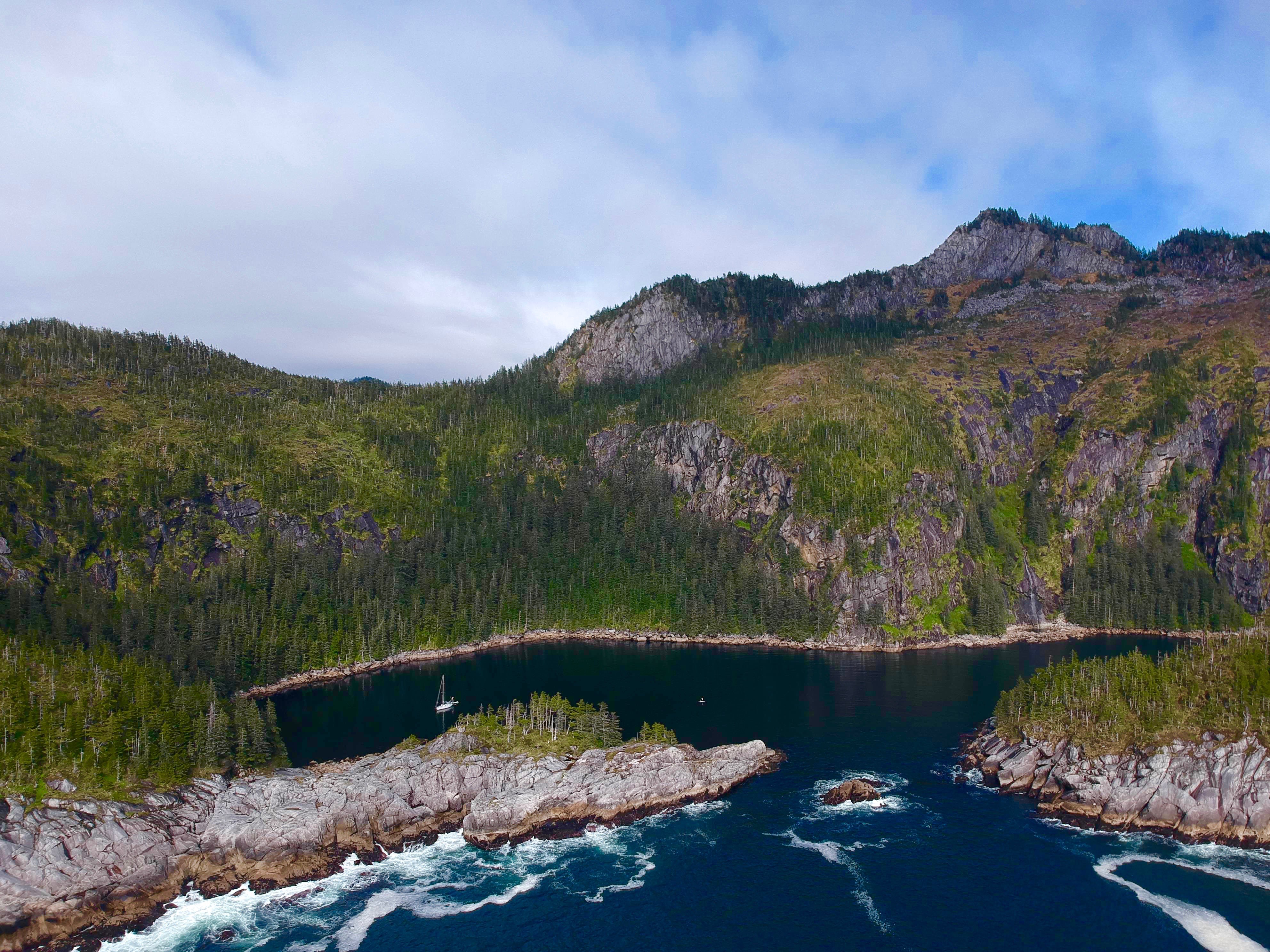
The common approach is to stay north of the rock when coming or going and you’re good. Mid-channel depths at a plus 5-foot tide weren’t lower than 30 feet when we exited into minimal swell. Passing south of the rock offers a narrower slot, but if you stick closer to it instead of being mid-channel or farther south, depths of 17 feet at an 8-foot tide will allow passage. Having done both, I’d say go in and out of the north side.
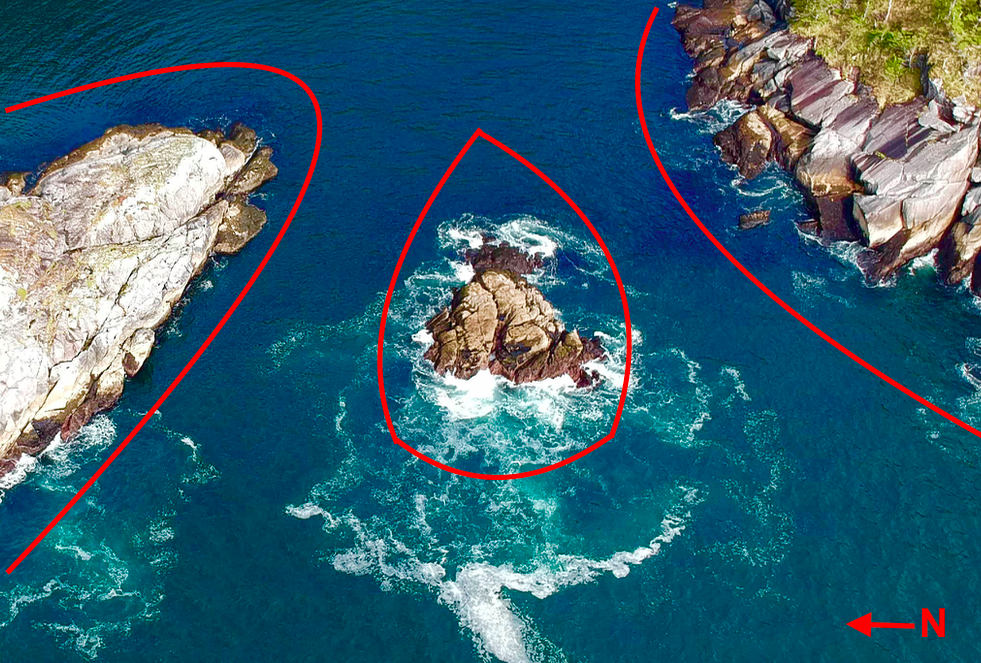

Once you’re past the entrance, take a deep relaxing breath as you watch depths quickly descend back into the 100-foot range. The north and south coves are said to have good holding, and we dropped our hook in 85-feet, backed into the northwest corner to firmly set it, and ended up swinging comfortably in 55 to 65 feet. And though we had Taz all to ourselves, a half-a-dozen boats or so could probably fit comfortably.
With the anchor set, head out by dinghy, kayak or SUP to take in stunning views of the cliffs and waterfalls. Being such a steep-walled cove, there aren’t many places to stretch your legs ashore, but scrambling over the big boulders on the small peninsula that makes up the northern flank of the entrance is a must. Standing here gazing seaward in awe, ruminating over that narrow entrance, and then back into the basin at your own boat resting comfortably is truly unforgettable.
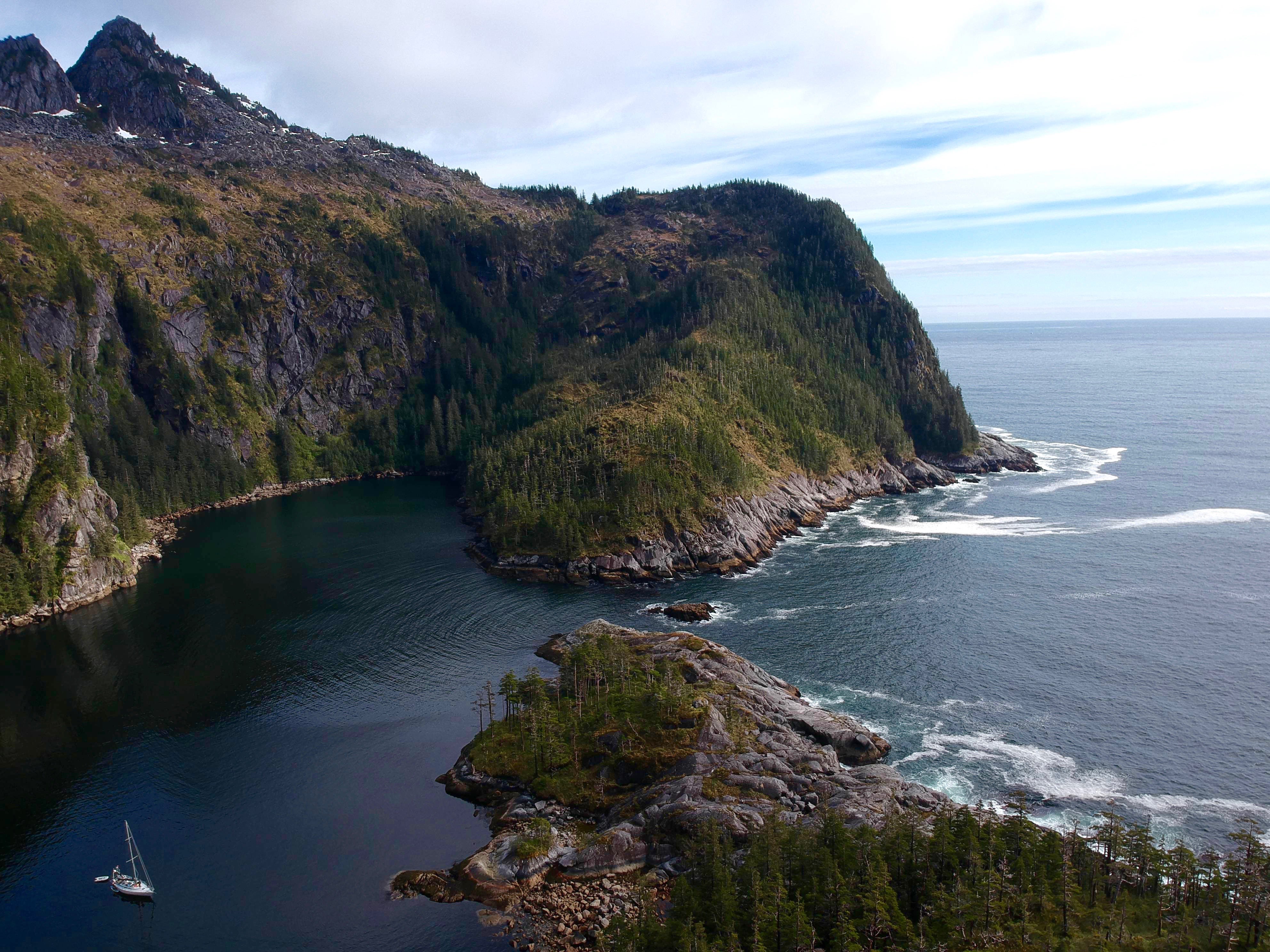
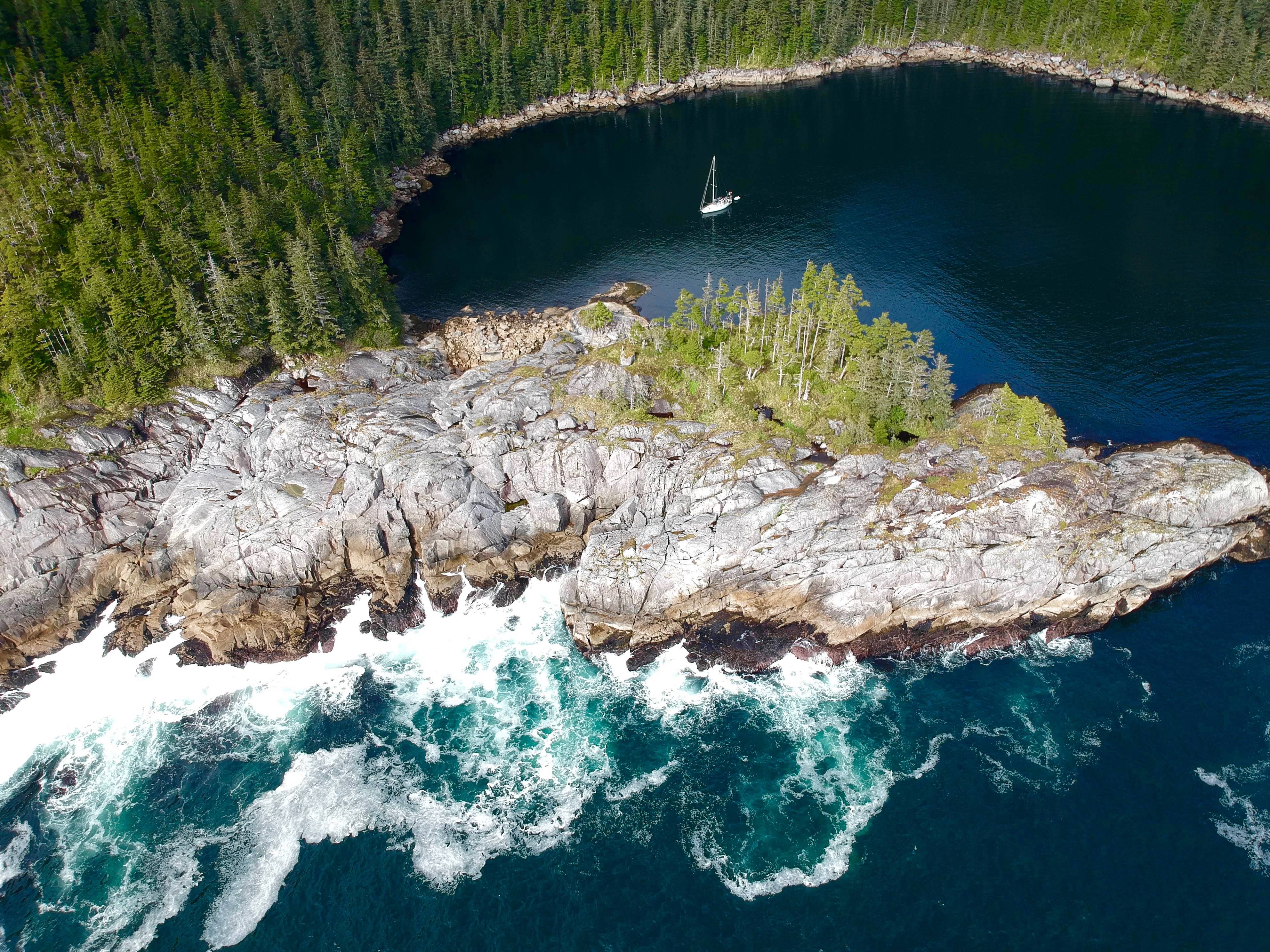
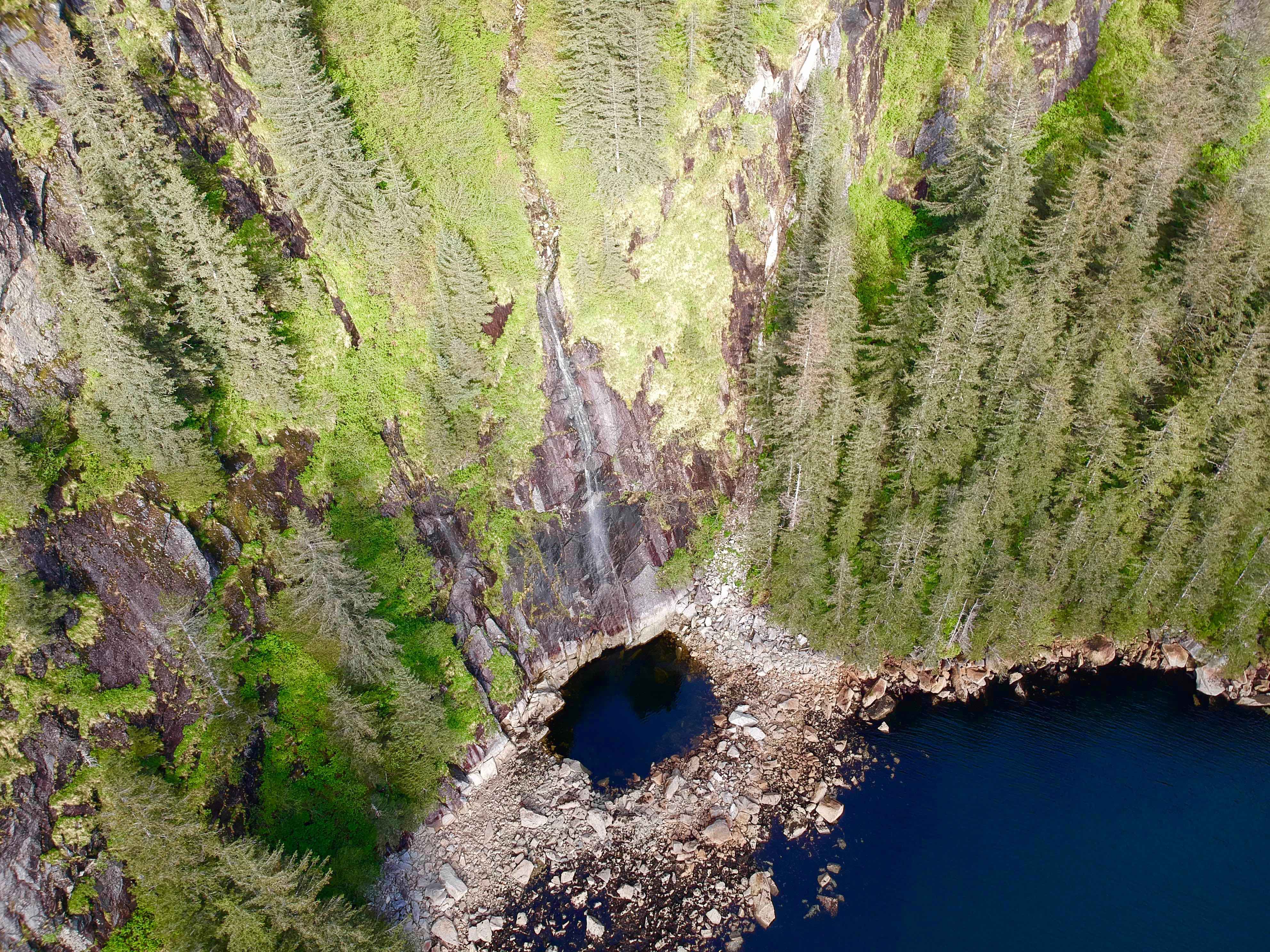
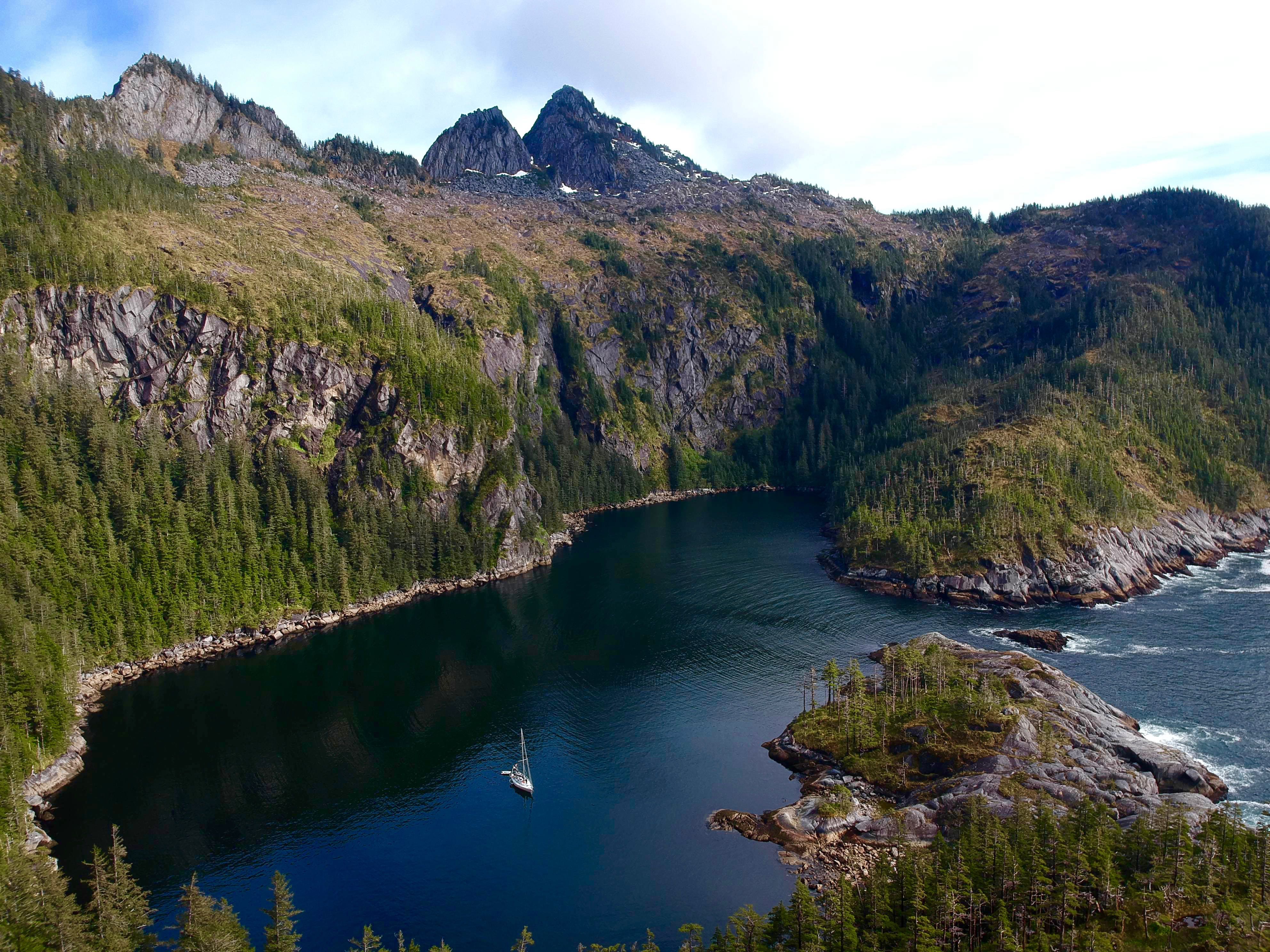
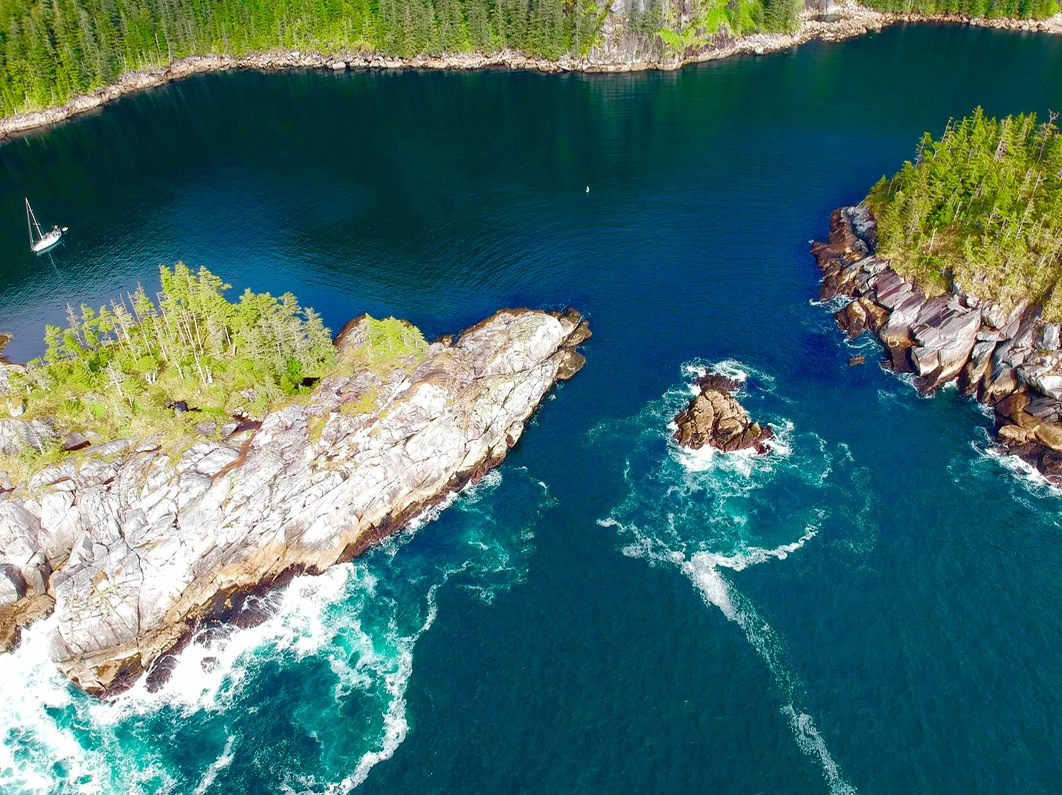
Andy Cross
Andy Cross is the editor of 48° North. After years cruising the Pacific Northwest and Alaska with his family aboard their Grand Soleil 39, Yahtzee, they sailed south and are currently in the Caribbean Sea. You can follow their adventures at SailingYahtzee.com.

